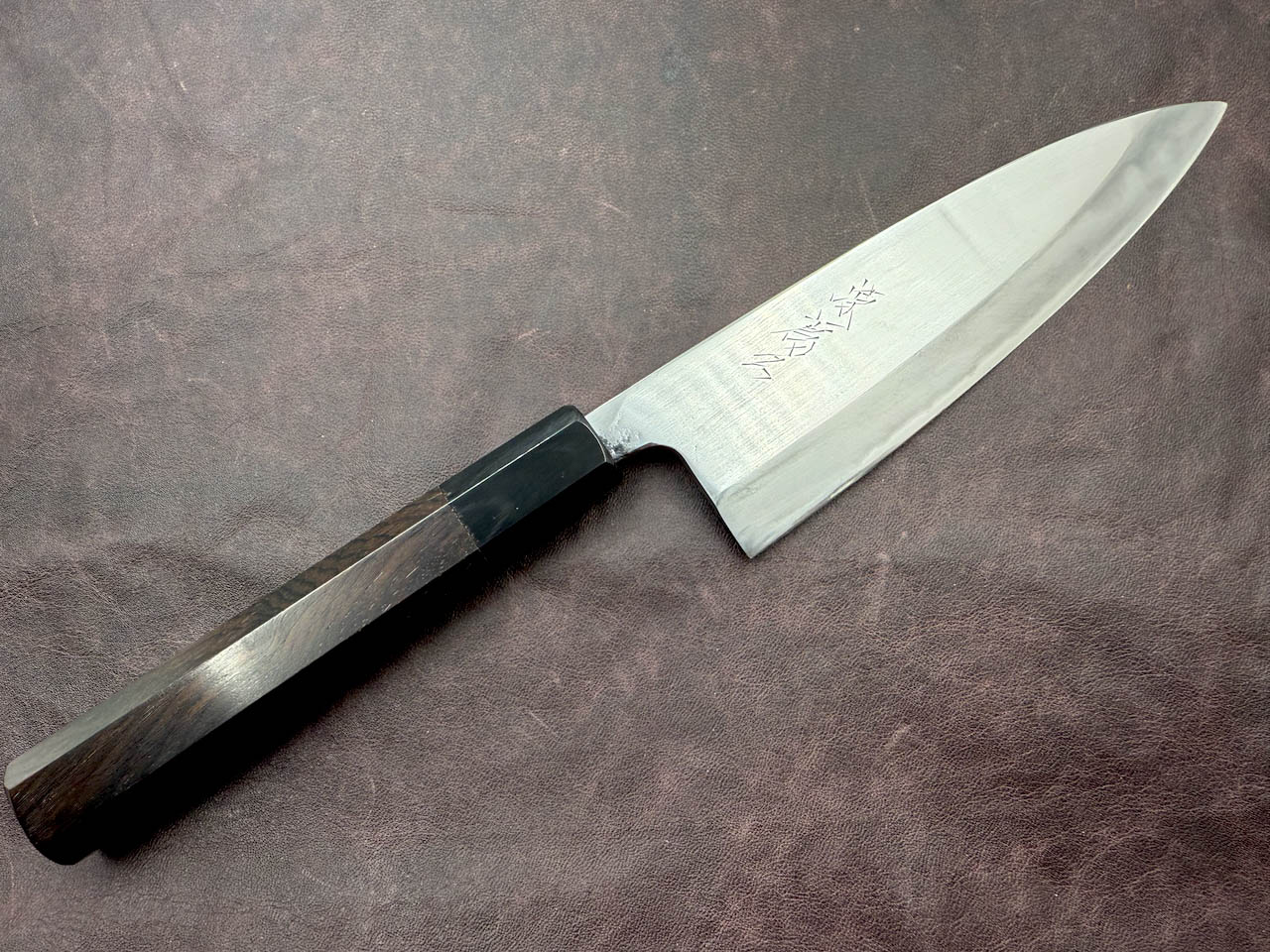
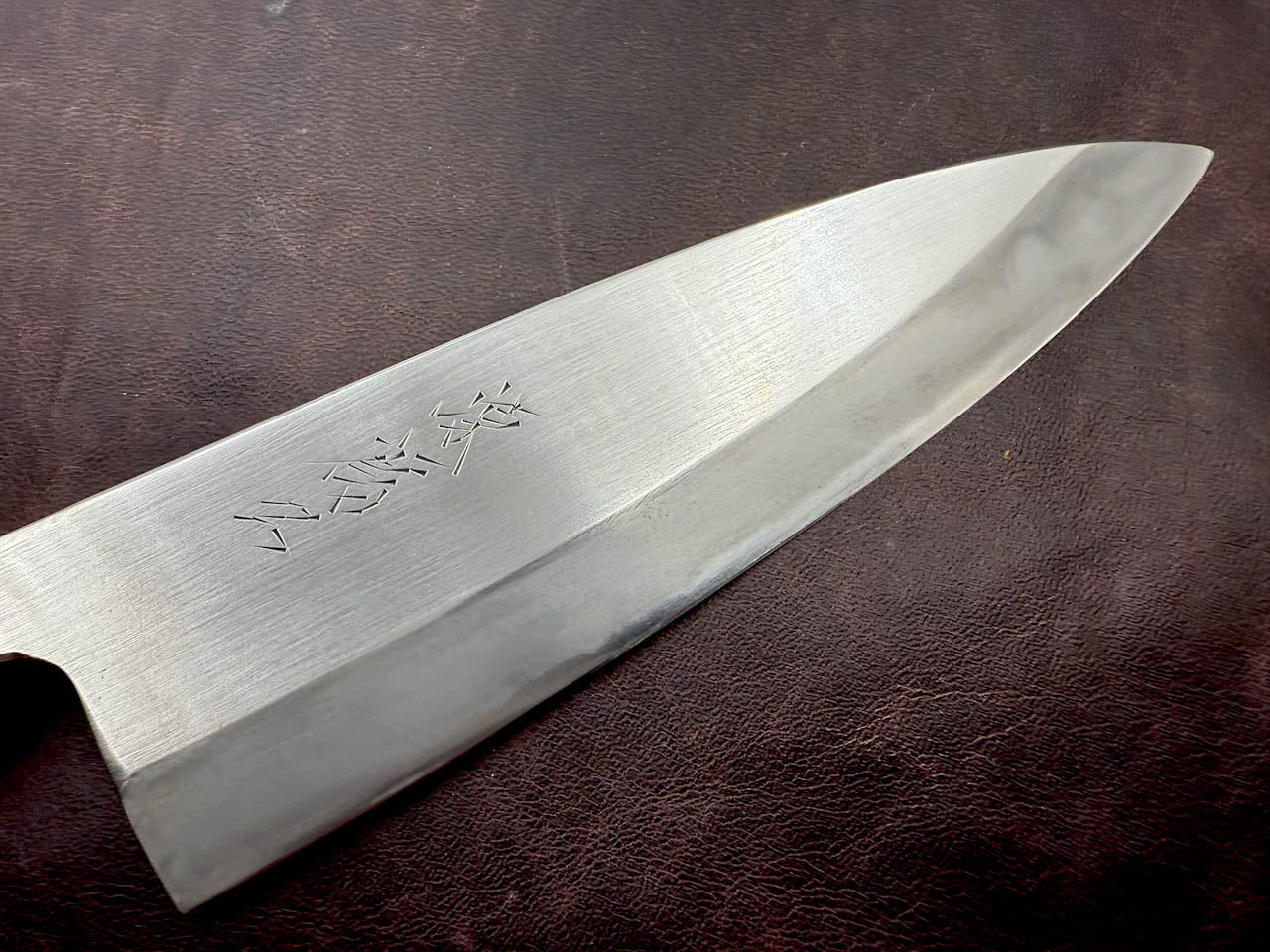
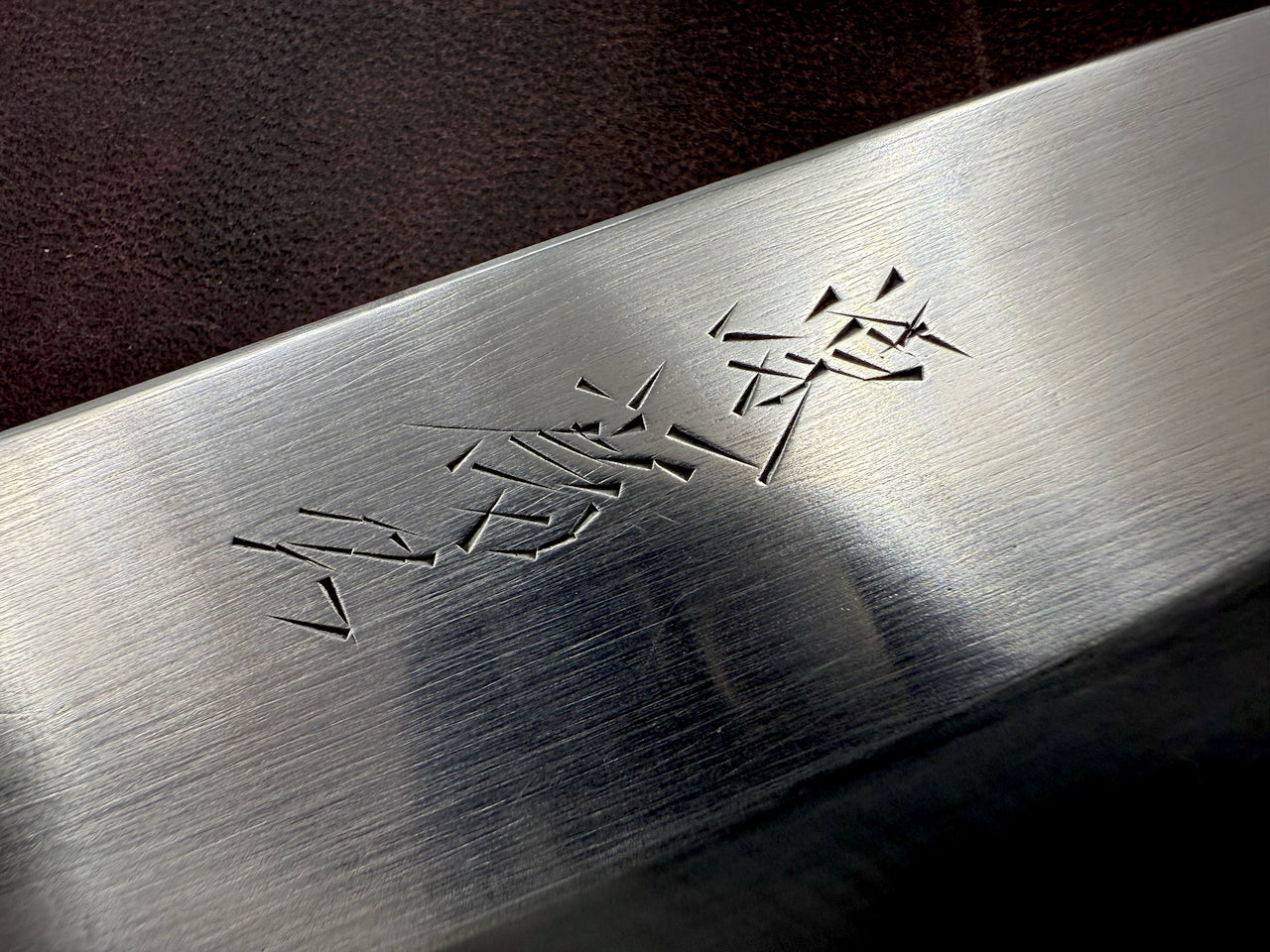
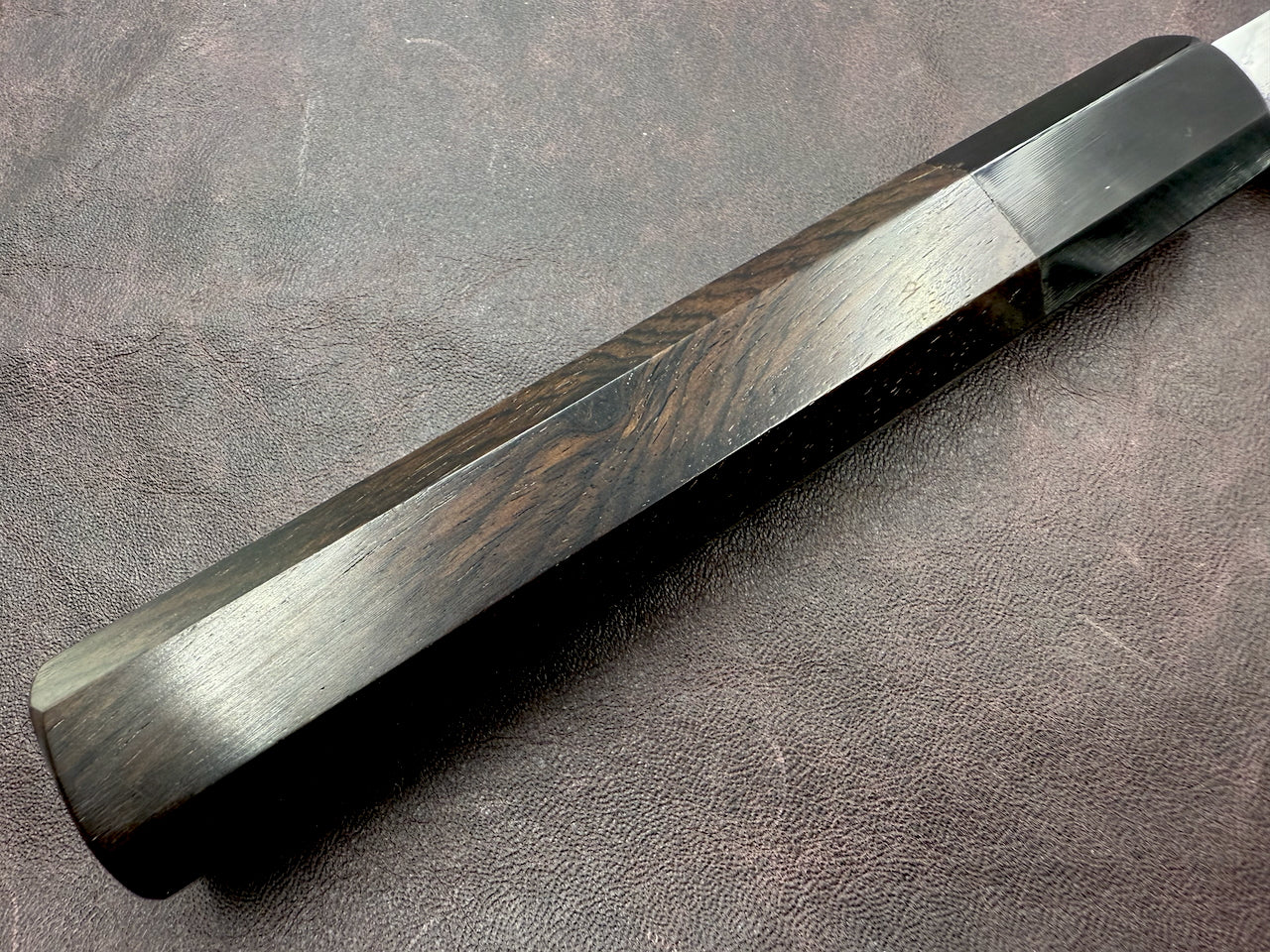
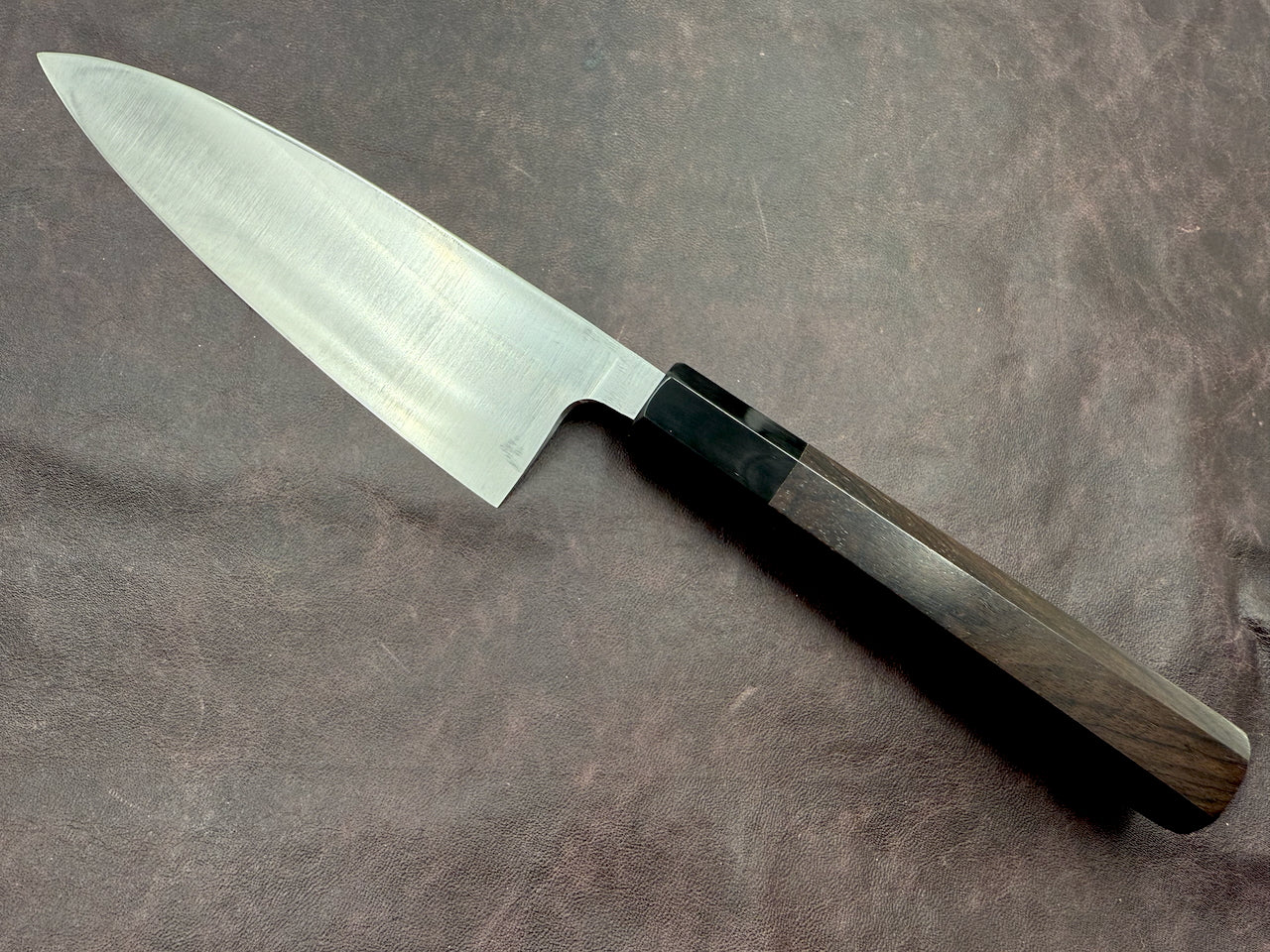
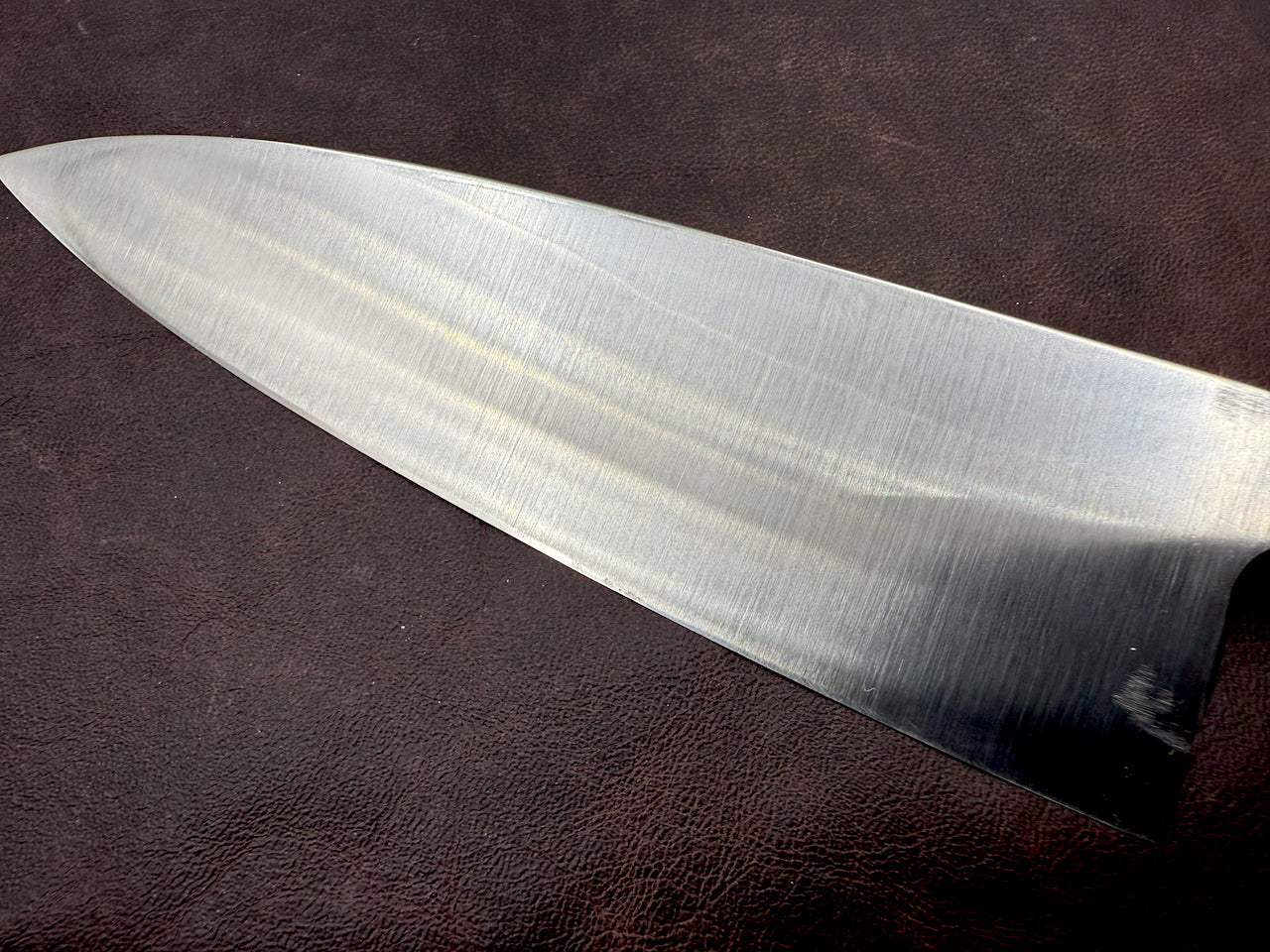
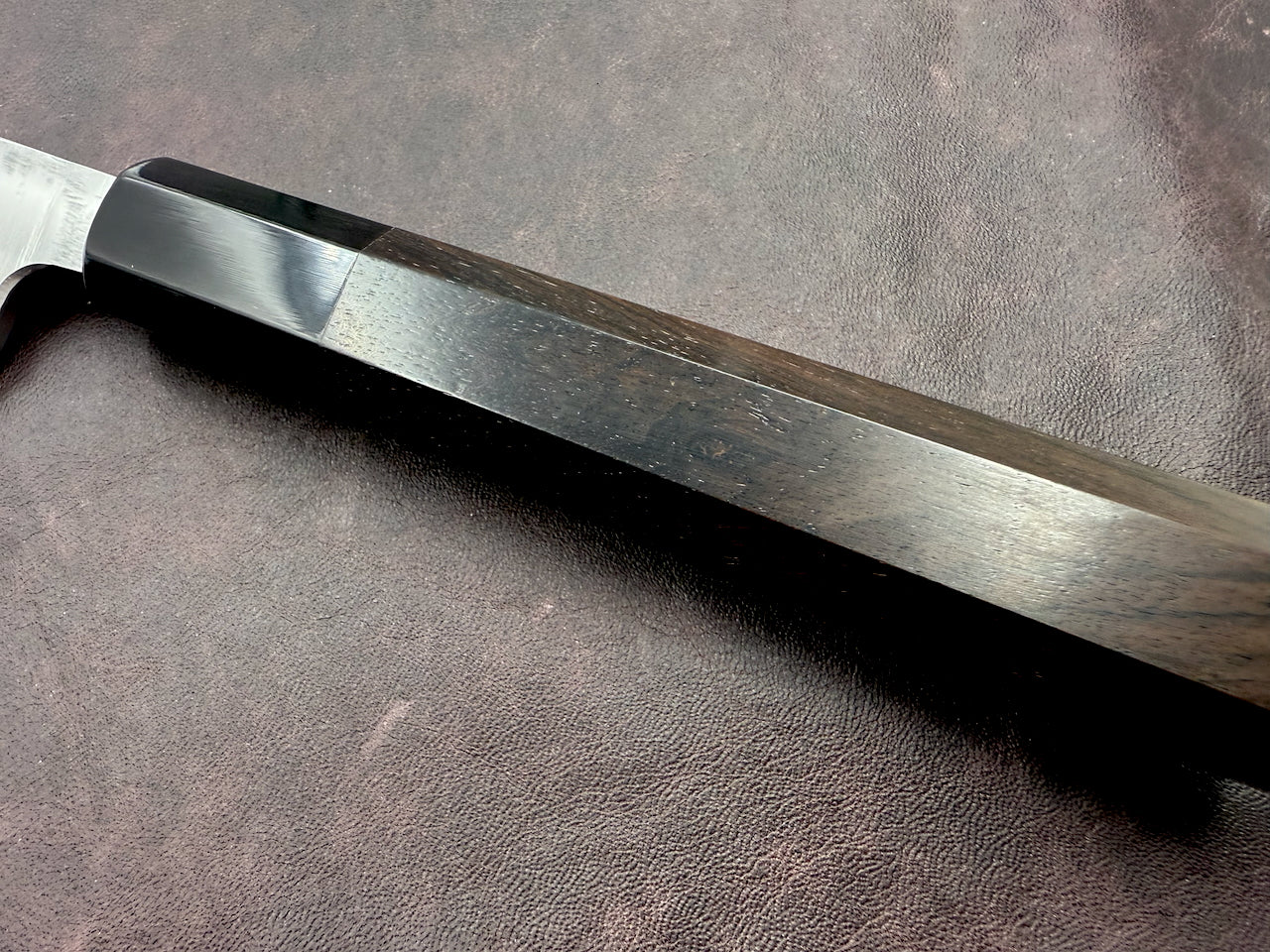
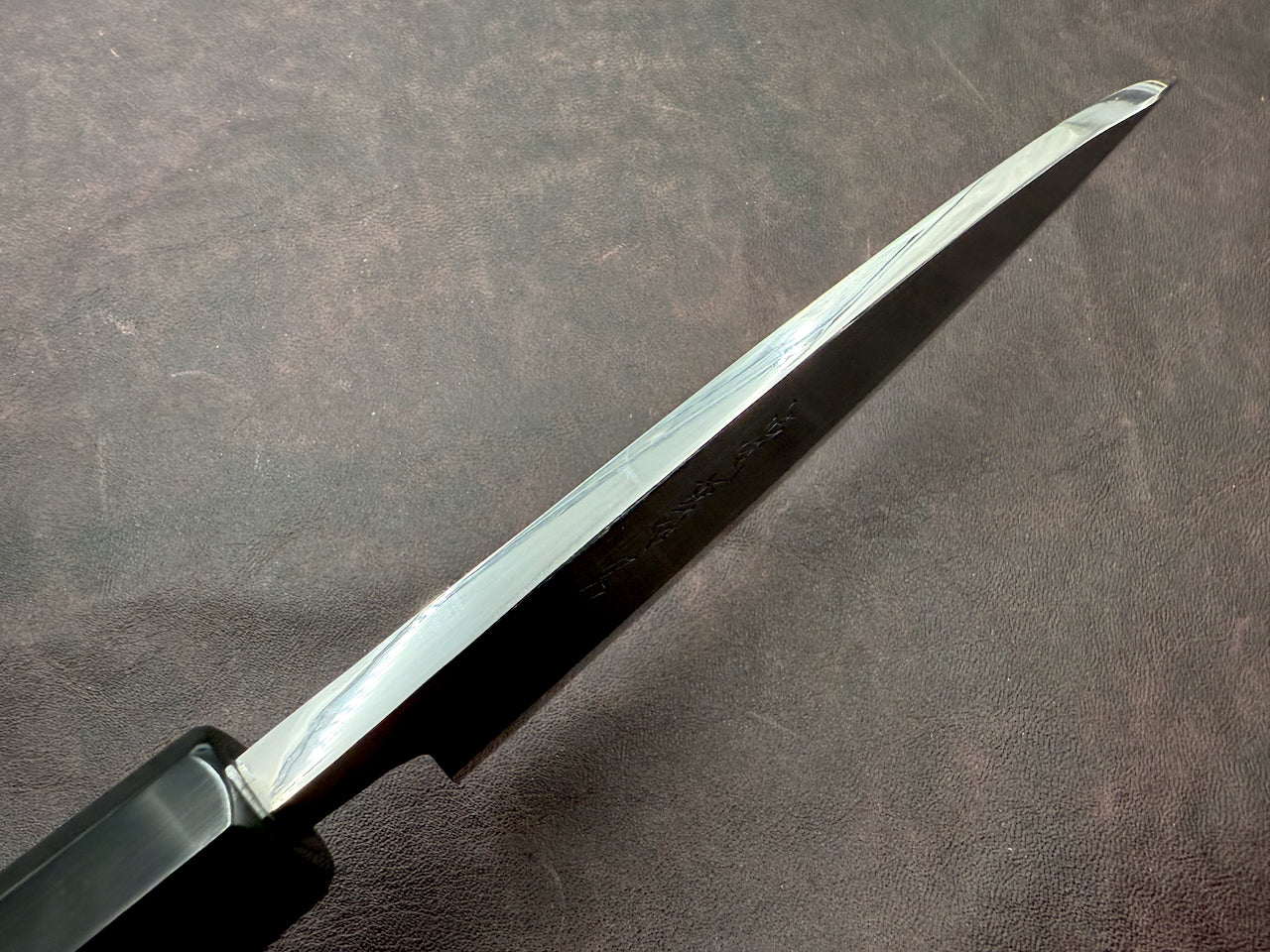
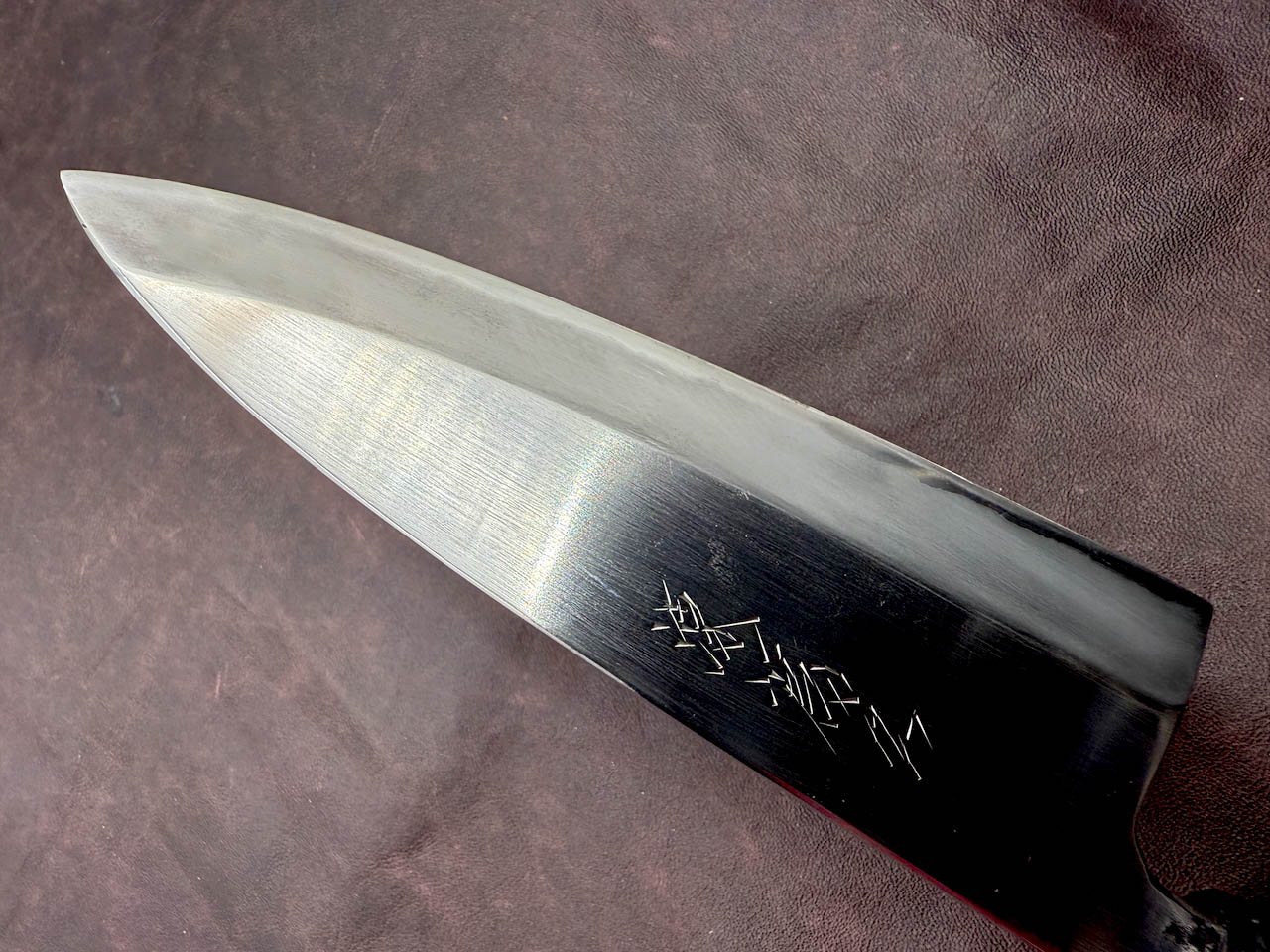
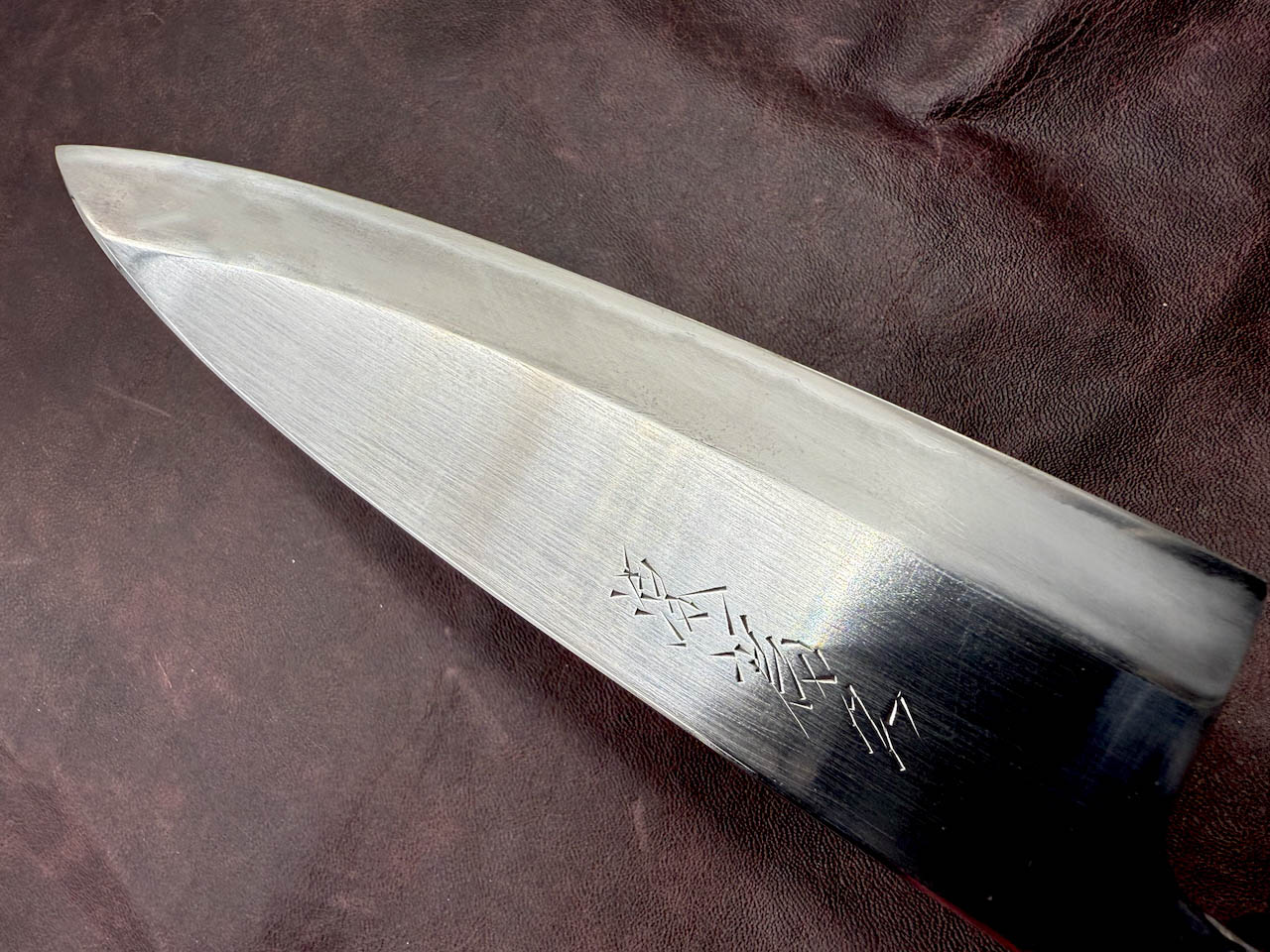
Griffith Shaving Goods
Minamoto Tamehisa Japanese 160mm Deba Kitchen Knife - Vintage Restored
This beautifully restored Deba has many years of life remaining. It has been fully reground, polished and shows a lovely kasumi finish on the bevel and has been sharpened, fully ready for use.
The steel is quite hard and feels like Aogami #2 (a high-carbon steel from Hitachi, known for its excellent edge retention and added alloying elements for better toughness and wear resistance than Shirogami) treated on the harder side. The knife is well crafted and paired with a new custom Ebony handle with buffalo horn ferrule. The knife has a 160mm cutting edge and 310mm overall length.
History:
源為久 (Minamoto Tamehisa)
The Japanese Deba knife (出刃包丁, deba bōchō) is a traditional Japanese kitchen knife primarily used for butchering fish, although it's also suitable for cutting meat and poultry with small bones.
Key Characteristics:
-
Blade Shape: Thick, broad blade with a pointed tip. The heel of the blade is very sturdy, ideal for cutting through fish heads and small bones, while the tip is precise enough for filleting.
-
Blade Thickness: Much thicker and heavier than most Japanese knives, giving it the power needed for heavier cuts.
-
Single Bevel: Traditionally, Deba knives are single-beveled (usually for right-handed users), meaning one side is flat while the other is ground. This allows for more precise and cleaner cuts, especially when filleting fish.
Primary Uses:
-
Breaking down whole fish (cutting through heads, bones, and filleting)
-
Chopping meat and poultry (small bones only—it's not meant for hacking through large bones like a cleaver)
